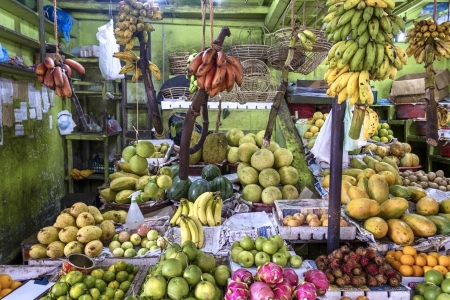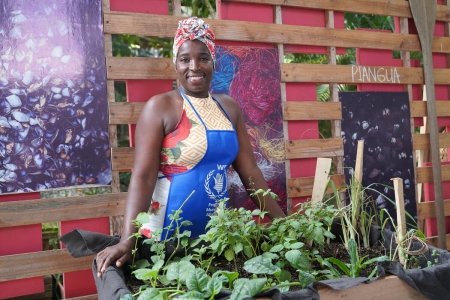Food Waste: 13 Facts You Need to Know
You’ve probably heard about “food waste” but how much do you know about this phenomenon? In a world where 783 million people go to bed hungry every night, limiting our food waste isn’t just a moral imperative. Food waste also has real environmental, economic and social impacts.
The good news is that everyone can play a part in consuming more conscientiously and decrease our food waste. Let’s learn more about food waste, its causes, and some of its solutions. Together, we hold the power to make a positive change towards a more sustainable and caring future.

- Food Waste vs Food Loss: Food waste occurs in the kitchen and refers to the produce that is thrown away by consumers. Did you know that 20 lbs. of food is wasted every month by the average American? Food loss, on the other hand, often happens during the production and harvesting process, as crops can be lost due to pests, insects, and mold. For example, an astonishing 40% of foods grown by African farmers are lost due to external factors, leading them to lose their crops.
- Around one-third of food is lost or wasted each year, which equals a financial loss of US$940 billion annually. This number represents both the value of the uneaten food itself, and the associated costs during production, distribution, storage, and disposal.
- Food loss is one of the root causes of hunger worldwide. Despite there being enough food to feed almost over 7 billion people, 828 million people still go to bed hungry every night. That is equivalent to one in nine people who are undernourished. If we could recover all the food wasted, we could feed every hungry person on the planet twice.
- Throwing away one hamburger wastes the same amount of water as a 90-minute shower. From the water-intensive agriculture needed to grow feed crops for cattle, to the water requirements of livestock, producing a hamburger has significant hidden costs when it comes to water consumption.

- The amount of fresh water wasted as a result of food production could fill Lake Geneva (580 square kilometers or 360.4 mi) three times. Can you imagine what would happen if that amount was redirected into sustainable agriculture?
- Contrary to what many people may believe, reports by WWF-UK show that 58% of global farm-stage food waste happens in middle and high-income countries. Despite these countries’ advanced agricultural practices and technologies, food waste remains a pressing issue.
- If food waste was a country, it would be the third biggest emitter of greenhouse gases after China and the United States. Food loss and waste produce an estimated 3 billion tons of greenhouse gases each year, amounting to 10% of global greenhouse gases emitted. In developed countries, a significant amount of the food produced ends up in landfills. As the food decomposes, it produces methane, a potent greenhouse gas that has a substantial impact on climate change and agriculture.
- Almost half of all fruit and vegetables produced are wasted, the equivalent of 3.7 trillion apples. There are several factors that contribute to this issue, such as the limited shelf life of fresh foods, supply chain challenges, lack of awareness regarding food waste, and overproduction.

5 tips to reduce your food waste
- Plan meals and make a shopping list: Plan your meals in advance and create a shopping list accordingly. This helps you buy only what you need and reduces the chances of purchasing excess food that may go to waste.
- Proper storage and organization: Understand the optimal storing conditions for different types of food to extend its shelf life. Proper organization helps you keep track of what you have and prevents items from being forgotten and wasted. Here are some useful tips about how to store fruits and vegetables to extend their shelf life.
- Practice portion control: Serve and consume appropriate portion sizes. Avoid overfilling plates or serving more than you can eat. Consider sharing larger dishes or storing leftovers in the fridge for the next meal.
- Use leftovers creatively: Instead of discarding leftovers, find creative ways to repurpose ingredients into new dishes for future meals, such as turning vegetables into soup or a salad.
- Compost food scraps: Instead of throwing away food scraps, consider composting them. Composting turns organic waste into nutrient-rich soil that can be used for gardening. Many cities have compost programs, or you can even do it from your own home!
Join us in discovering the World Food Programme’s (WFP) work as they strive to end world hunger through sustainable and innovative initiatives. WFP works to empower communities, implement efficient distribution methods, and promote resilient agriculture.
You can also make a difference by joining the Freerice community as you challenge your knowledge while making a real impact. Learn more about food waste, discover practical solutions, and become part of the solution.
With every correct answer, you donate rice to the World Food Programme and contribute to the fight against hunger.
Join the conversation and use #StopTheWaste and #ZeroHunger on social media to raise awareness! Share tips, stories, and innovative ideas to inspire others to join the movement. Together, we can create a global community committed to reducing food waste and building a more sustainable future.